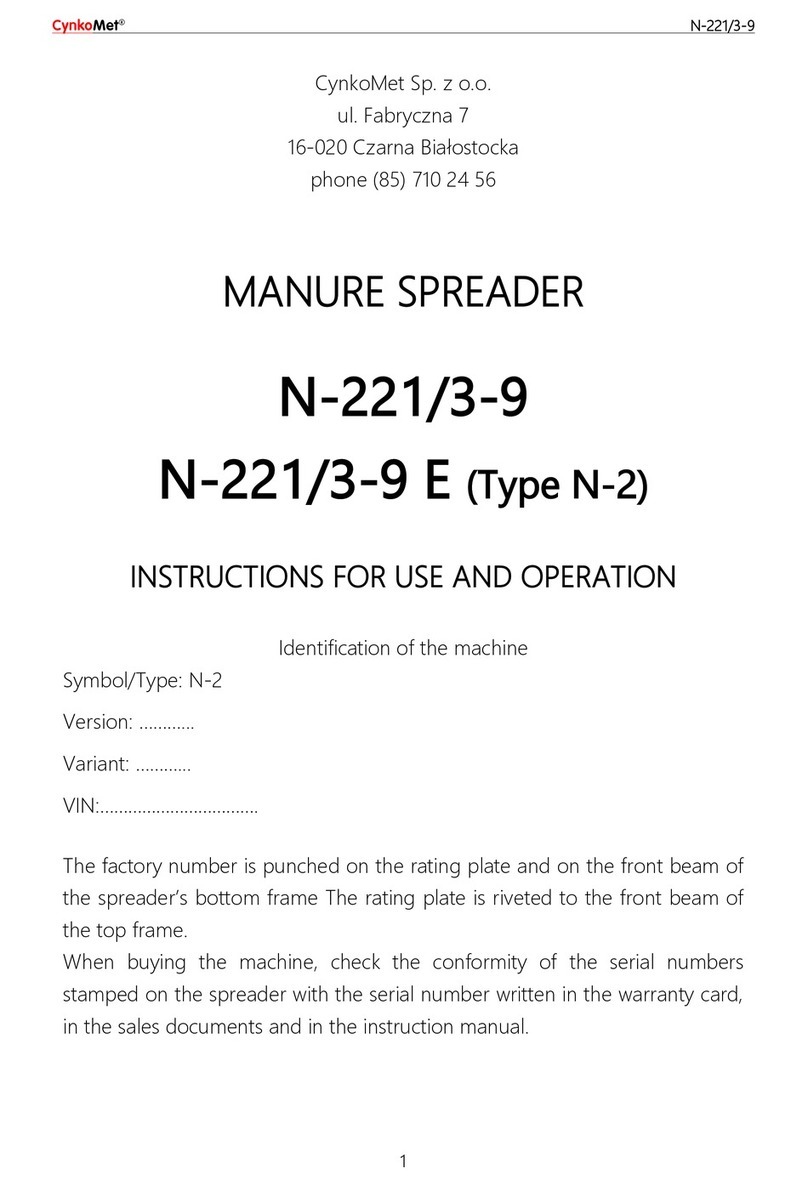CynkoMet N-233
6
4.3.2 Preparation for the spreader’s work................................................ 38
4.3.3 Preparation for operating the spreader as a transporter. ................ 39
4.3.4 Loading the spreader...................................................................... 40
4.3.5 Connecting and disconnecting with the tractor. .............................. 40
4.3.6 Loading the cargo box. ................................................................... 42
4.3.7 Load transport................................................................................. 49
4.3.8 Unloading of the crate serving as a transporter. ............................. 50
5. Equipment and accessories .....................................................................51
6. Technical Support ...................................................................................52
6.1 Regulation of driving wheel bearings backlash...........................................54
6.2 Brake adjustment. ....................................................................................55
6.3 Handling the pneumatic brake system.......................................................56
6.4 Handling of the hydraulic system of the rear wall and brakes......................57
6.5 Maintenance of the drive axle...................................................................58
6.6 Mounting the adapter's drum guard.........................................................58
6.7 Adapter maintenance...............................................................................60
6.8 Operation of the floor conveyor ...............................................................61
6.9 Handling electrical equipment. .................................................................62
6.10 Lubrication. .............................................................................................62
6.11 Storage and maintenance.........................................................................67
6.12 Adjustment of conveyor drive and adapter drive chain tension...................68
6.13 Blockade of adapter drums ......................................................................69
6.14 Troubleshooting.......................................................................................71
7. Transport.................................................................................................74
8. Spreader cassation ..................................................................................76
9. Guarantee ...............................................................................................76




























